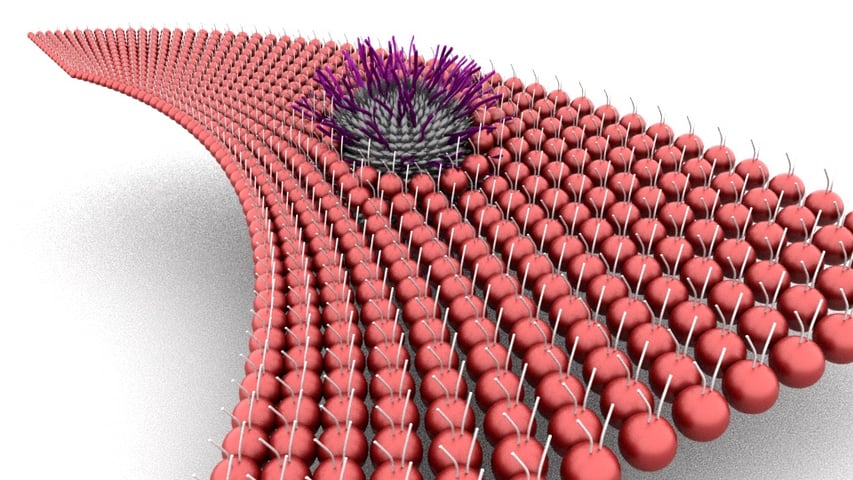
As the usage of nanoparticles in different industrial and biomedical applications is increasing, there is a need to understand how they interact with the human body. Due to their small size, nanoparticles can penetrate biological membranes and alveolar region of the lung. This can have severe effects on the function of the biological system.
Pulmonary or lung surfactants are complex mixtures of lipids and proteins, which are secreted by the epithelial type II cells into the alveolar space. The lipids and proteins that make up the surfactant have both hydrophilic and hydrophobic regions making them surface active. For this reason, pulmonary surfactants reduce the surface tension of the alveolar fluid and thus reduce the energy required to inflate the lungs. The increase in surface tension in the alveolar region has been reported in a number of diseases such as asthma, pneumonia, chronic obstructive pulmonary disease (COPD), and respiratory distress syndrome. Penetration of nanoparticles into the alveolar region can alter the interfacial properties of the surfactant and thus play a role in the development of these diseases.
Cell or plasma membrane is a biological membrane that separates the interior of the cell from the outside environment. The plasma membrane is composed of a lipid bilayer with embedded proteins. The main purpose of the membrane is to protect the inside of the cell and control the movement of substances in and out of the cells. The lipid composition of the cell membrane is important for cell viability. When nanoparticles penetrate human body, the lipid bilayer of the cell gets exposed to them.
There have been several studies to show that nanoparticle interactions with plasma membrane have a role in particle-induced cytotoxicity. Different membrane models are used to study nanoparticle effects on plasma membrane structure and function.
To learn more about nanoparticle interactions with biological interfaces and how to study them, register for a webinar by Prof. Amir Farnoud.
Discover how QCM-D enables real-time, label-free analysis of supported lipid membrane formation, structure, and dynamics for advanced research
QCM-D was used to compare the potency and mechanisms of action of two different detergents in disrupting lipid membranes
Read about Prof. Jackman's experience using QCM-D to study surfactant-interaction with model membranes
Read about Prof. Jackman's experience using QCM-D in the field of membrane biophysics.
Watch the webinar to learn more about how to combine QCM-D and Neutron reflectrometry to examine membrane biochemistry at the solid-liquid Interface
Read about two cases where QSense QCM-D technology was used to explore viral membrane disruption and an antiviral strategy towards pandemic preparedness.
To characterize model membrane platforms, such as vesicles, monolayers, and bilayers, it is often necessary to use more than one analysis method.
Learn about how QSense QCM-D is used to monitor vesicle interaction with solid substrates and to characterize surface-adsorbed vesicle layers.
Learn more about how Lipid Envelope Antiviral Disruption (LEAD) maybe could be used in the future to address infectious disease such as Zika, Dengue and Hepatitis C.
